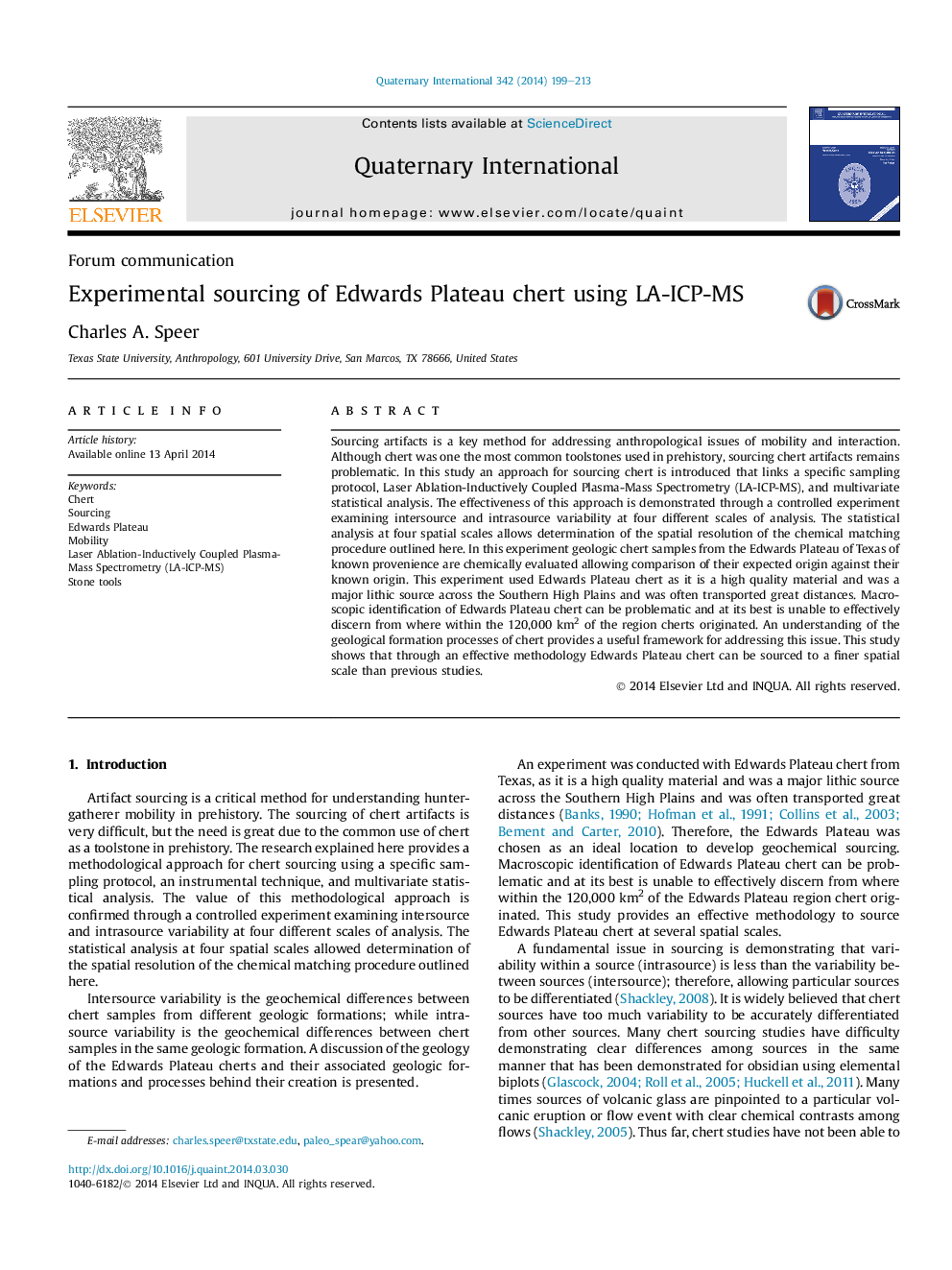| Article ID | Journal | Published Year | Pages | File Type |
|---|---|---|---|---|
| 1041573 | Quaternary International | 2014 | 15 Pages |
Sourcing artifacts is a key method for addressing anthropological issues of mobility and interaction. Although chert was one the most common toolstones used in prehistory, sourcing chert artifacts remains problematic. In this study an approach for sourcing chert is introduced that links a specific sampling protocol, Laser Ablation-Inductively Coupled Plasma-Mass Spectrometry (LA-ICP-MS), and multivariate statistical analysis. The effectiveness of this approach is demonstrated through a controlled experiment examining intersource and intrasource variability at four different scales of analysis. The statistical analysis at four spatial scales allows determination of the spatial resolution of the chemical matching procedure outlined here. In this experiment geologic chert samples from the Edwards Plateau of Texas of known provenience are chemically evaluated allowing comparison of their expected origin against their known origin. This experiment used Edwards Plateau chert as it is a high quality material and was a major lithic source across the Southern High Plains and was often transported great distances. Macroscopic identification of Edwards Plateau chert can be problematic and at its best is unable to effectively discern from where within the 120,000 km2 of the region cherts originated. An understanding of the geological formation processes of chert provides a useful framework for addressing this issue. This study shows that through an effective methodology Edwards Plateau chert can be sourced to a finer spatial scale than previous studies.
